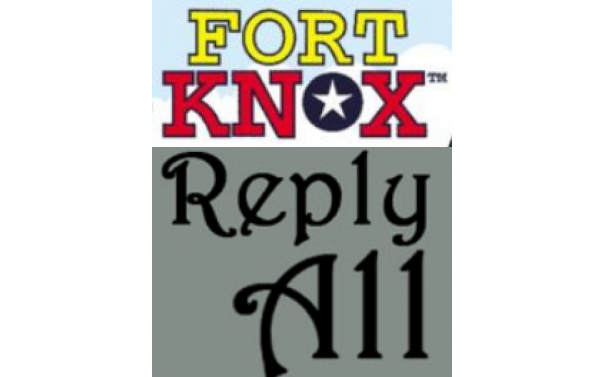CSotD: Some clean-up, then the laffs
Skip to commentsA follow-up from yesterday: Paul Berge’s page is always an excellent place to learn about the past in editorial cartooning, and he offers this William Ceperley cartoon from 1923 as proof that we aren’t the first generation to turn Memorial Day into a picnic rather than a solemn observation.
Which only scratches the surface, given that, in the 1884 speech linked here yesterday, Oliver Wendell Holmes framed it as a response to those who asked why the day was still observed, less than 20 years after the war.
In yesterday’s piece, I noted in passing that “A variety of people take credit for the holiday,” and the Washington Post offers a piece (no paywall) on one of the most prominent claimants, Charleston, SC, where, after voluntarily laboring to re-inter Union POWs more respectfully, the freed former slaves held a major dedication of the new cemetery on May Day.
Well, perhaps, the “perhaps” being that they held that first ceremony in the initial burst of post-war pride and, if they intended to make it an annual event, the rapid, firm institution of Jim Crow is a valid explanation of why it didn’t happen.
Still, it didn’t.
I’ll stake a different sort of claim, which is that generous gestures from freed African-Americans were an ongoing factor, a relevant example being that of John Jones, an escaped slave who lived in Elmira, NY, which was both a major junction of the Underground Railroad and the site of a POW camp for Confederates.
Jones was a conductor on the underground and it appears that his white neighbors all knew it and nobody betrayed either him or the hundreds of people he sheltered and then put on trains for Ontario.
He was also the person who buried the Confederate dead from the camp. Given the conditions there, and the conditions of the ragged, starving rebels when they arrived, Jones had many graves to dig.
But unlike Andersonville or, for the matter, the officers’ prison in Charleston, each man who died in Elmira was buried with a wooden marker at his head and a bottle tied around his neck, containing his name and unit number, so he could be returned home and re-interred after the war, courtesy of a man whom his army sought to keep enslaved.
Following the war, the families of these dead rebels were permitted to bring their bodies home for re-burial in family plots, but, seeing the respect with which they had been laid out among their comrades, nearly all decided to leave them where they were, with Jones’s wooden plaques replaced by marble stones, and a memorial from the Daughters of the Confederacy among the nearly 3,000 graves.
Point being that John Jones held his own small, daily versions of Memorial Day before the war had even ended.
Trivia Note: Jones’s wife, Rachel, was a free woman from Pennsylvania whose brother, Stephen, was the first Black officer promoted from within the ranks of the US Army, and not without a great deal of effort.
Significant Point: History classes can’t tell all the stories, hence Plutarch’s oft-rephrased observation about education, that “the mind does not require filling like a bottle, but rather, like wood, it only requires kindling to create in it an impulse to think independently and an ardent desire for the truth.”
Ditto, I’d say, with holidays: They should only serve to remind us of what we ought to do on a regular basis.
Rather than quarrel over who started it, devote your energy to maintaining it.
Can’t We Talk About Something More Frivolous?
South Africa has 11 official languages, but this word isn’t in any of them. On the other hand, if you have much exposure to Irish and British slang, you’ve heard it often. Madame & Eve suggests an alternative spelling that won’t change the pronunciation.
Or, as Thandi learned, keep you out of the principal’s office. Too bad; I was hoping to use it here.
Juxtaposition of the Day #1
A different kind of Spidey Sense is at play among these kids, and it’s a valuable one. They may not foil a lot of bank robberies, but at least they won’t starve to death.
Juxtaposition of the Day #2
This isn’t as far-fetched as you might think. I once adopted a retired show dog, and aside from how well she was trained in expected ways, all that time on the road going from show to show included teaching her to pee on command. It’s a necessary skill, or at least a very welcome one, when you pull over at a rest stop and want to skip the 15-minute wander-sniff-and-contemplate routine most dogs go through.
And I suppose if you can train a dog to pee on a pad while you’re off at work, there’s no reason you couldn’t select a few despised plants for backyard destruction.
Gary McCoy left a good pun to your imagination. An excellent touch!
Liniers often makes the reader work a little in Macanudo (KFS), which probably costs him potential fans among those who insist on being spoonfed their comics, but builds intense loyalty among those who enjoy a bit of philosophy amid the giggles.
Speaking of which, I suppose I could have featured a third Juxtaposition, but Existential Comics is so intentionally didactic that it’s a different type of smart cartooning. I’ll admit that, even having majored in this sort of stuff, I continue to learn from this entertaining comic. Congratulations on the milestone!
Plutarch would be so pleased!
And also on a personal note, Jon Adams evokes a slew of memories of coffeehouse days, since we always had a few people who spent more time explaining a song than performing it. There were people whose explanations — intentionally or not — were as entertaining as their music, but too many who were equally inept at both.
Adams’ caption leaves space not only for the mediocre player who ruins a song, but also (and I doubt this was his intention) for the person whose arrangement is original and captivating, but not very much at all like the original.
Which makes the snots who prefer their folk music spoonfed say, “That’s not how it goes.”
IMHO, too many performers prove that attempting to duplicate the original is the best way to ruin it. Bob Dylan wrote some of the “world’s greatest songs” and thank god few people imitated him in their covers.














Comments 4
Comments are closed.